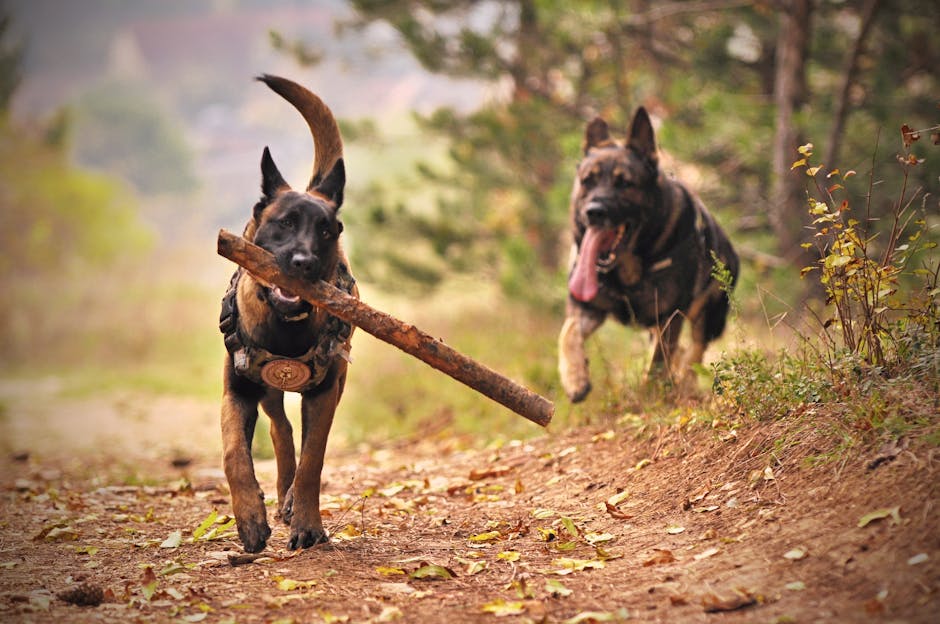The Impact of Nature Sounds on Pet Behavior: Discover Relaxation & Training
Imagine this: your beloved pet, once anxious and hyper, now lounging peacefully, all the while listening to the soothing sounds of a forest or gentle ocean waves. The power of nature sounds, when woven into the fabric of pet care and training, is a poignant pathway to promote relaxation and enhance overall well-being. With more pet owners seeking innovative ways to support their furry friends, understanding the impact of natural audio environments—like bird calls and bubbling brooks—can shift the landscape of how we train and care for our pets.
As we dive deeper into the relationship between auditory environments and pet behavior, you'll discover compelling evidence supporting the use of natural sounds in training strategies. We'll provide practical guidance on how to integrate these sounds into your pet's daily routine and explore a unique angle on sensory experiences that extends beyond traditional techniques.
The Science Behind Nature Sounds and Pet Behavior

Research shows that sound has a profound effect on our emotional state, including our pets. A study published by the Journal of Veterinary Behavior reveals that calming sounds—like nature audio—can significantly reduce anxiety and stress levels in dogs, suggesting that similar principles may apply to other pets as well. This is pertinent information, especially given that many pets experience anxiety due to a host of factors, such as loud noises, changes in routine, or shifts in their environment.
Highly sensitive animals often react negatively to jarring sounds, which can be detrimental to their behavior and overall health. Nature sounds, in particular, have been shown to lower heart rates and create a serene atmosphere—potentially even leading to better learning during training sessions.
For example, studies have shown that dogs exposed to classical music, which is often structured and rhythmic much like natural sounds, showed improved results in behavior tests and training sessions. When you combine this with natural environments—think of majestic oak trees rustling in the wind or a gentle waterfall—the potential for improved emotional and behavioral outcomes becomes greatly amplified.
Enhancing Pet Training with Natural Sounds

Integrating nature sounds into your pet training routines can transform the experience for both you and your furry friend. The methodology is simple yet effective. Begin by identifying specific triggers that set off anxious behaviors in your pet—this could range from loud noises to unfamiliar surroundings.
Once you've pinpointed these triggers, seek out natural soundscapes that can help mitigate the stress your pet may feel during training. For instance, if your dog reacts poorly to sudden noises, try introducing recordings of forest ambiance that features gentle rustling leaves or flowing water. The calming influence of these sounds can help create a safe mental space for training.
Additionally, using sound as a cue during training can establish positive associations for your pet. For example, play ocean wave sounds when teaching your pet a new command. By consistently pairing the new cue with the natural audio, your pet may make the mental connection that calmer, soothing sounds lead to focused training sessions.
To explore more on innovative training techniques, consider checking out our article on transformative techniques in pet training.
Creating the Optimal Sound Environment

Creating an environment filled with calming sounds does not require expensive gadgets. You can easily curate playlists that incorporate natural audio from various online platforms. Free applications often host vast collections of nature sounds, from gentle rain showers to beach waves.
To further optimize this environment, experiment by integrating sound in various contexts. Here are some suggestions:
-
Calm Down Zones: Designate a specific area in your home where your pet can retreat when feeling anxious. Fill this space with soft bedding, toys, and a sound system for playing nature sounds. This will serve as a sanctuary for relaxation and comfort.
-
Sound Soaking Sessions: Pair nature sounds with your pet's grooming sessions. The soothing background music can make the experience more enjoyable and help them adapt better to routine grooming, reducing anxiety.
-
Training Tactics: Use nature sounds as a backdrop during training to maintain your pet's focus and minimize distractions. By building a routine involving specific nature sounds within training sessions, pets can learn to associate these calming sounds with positive reinforcement.
For additional insight on uplifting your training sessions, see our blog post on gamifying pet training, showcasing fun ways to enrich your pet’s learning journey.
Practical Guidance for Integrating Nature Sounds

Now that we understand the benefits of nature sounds, let’s delve into practical ways to integrate these soothing auditory experiences into your pet care and training routines:
Step 1: Research and Select Your Soundscape

First, identify the type of natural sounds that resonate with your pet or that have shown to improve their mood. Whether it’s birds singing, soft rain, or ocean waves, the choice can have different effects on various animals. Spend some time listening to different sounds to observe which ones engage your pet positively.
Step 2: Schedule Regular Listening Sessions

Implement regular "nature sound" listening times during both training and relaxation periods. Begin with short sessions and gradually increase the duration as your pet becomes more accustomed to the sounds. Structure this around their normal routine so they can associate specific sounds with exciting training times or calming moments.
Step 3: Observe and Adapt

Every pet is unique, and it’s crucial to observe their reactions to different sounds. If a particular sound stimulates anxiety instead of calming them, it’s time to try a different approach. Adaptability is key—what works for one animal may not work for another.
Step 4: Combine with Other Techniques

Integrating nature sounds is most effective when combined with other techniques such as positive reinforcement, interactive play, or aromatherapy. For example, soft nature sounds can create a relaxing atmosphere while you’re using an aromatherapy technique that soothes their nerves.
Step 5: Keep It Fun

Lastly, make the experience enjoyable! Choose nature sound recordings that you find pleasant, as your energy will seep into your pet's experience. Play a couple of different playlists, perhaps even during family game nights or cuddling sessions, so that your pet can enjoy the sounds in different contexts.
Recognizing Signs of Improvement
Tuning into nature’s soundscape can facilitate positive behavioral changes in your pet. Look for signs like increased calmness, improved focus during training, and a more relaxed demeanor overall. If you notice about her demeanor is significantly improving, then proceeding to tailor your approach further based on these observations can optimize the environment even more.
If you are interested in understanding your pet’s emotional states, you should explore our informative piece on decoding their emotional responses.
Addressing Common Questions
Can all pets benefit from nature sounds?
Absolutely! While dogs often respond well to vocalizations and certain natural sounds, other pets like cats, rabbits, and even birds can benefit from exposure to soothing auditory environments. The key is to monitor their responses and adjust as needed.
How loud should the nature sounds be?
Aim for a volume level that is calming—not overwhelming. Nature sounds should blend into the background rather than dominate the space. It’s important to find the right balance to encourage relaxation without causing distress.
How often should I incorporate sounds into training?
Regular integration of nature sounds is key—consider implementing them during almost every training session, in areas where your pet spends time, and in stress-inducing situations to help establish a calming association.
Fostering Greater Harmony and Connection
Utilizing natural sounds in pet care and training not only enhances your pet's emotional and mental well-being but also cultivates your bond through shared sensory experiences. By combining innovative methods like sensory stimulation, soundscapes, and traditional training methods, you'll empower a nurturing and rewarding environment for your furry companions.
To delve deeper into creating an enriching sensory environment for your pet, check out our guide on transforming their living space effectively.
Final Thoughts
Incorporating nature sounds into your pet care and training regimen opens up fresh opportunities for both you and your beloved companion. The engagement in this multi-sensory approach can cultivate not just a calmer pet, but a transformed bond between you two, built on shared experiences and emotional understanding.
Don't wait any longer—begin today to explore the world of natural sounds and witness the impact on your pet’s training and well-being. With patience and creativity, the path ahead promises a healthier, happier, more harmonious companionship.



